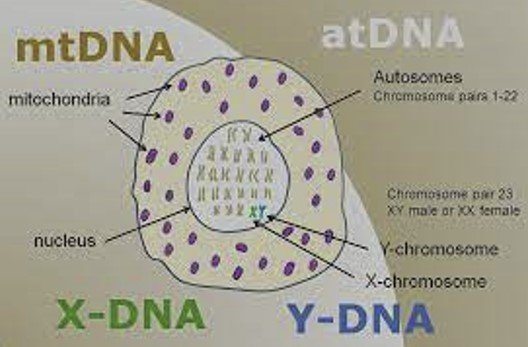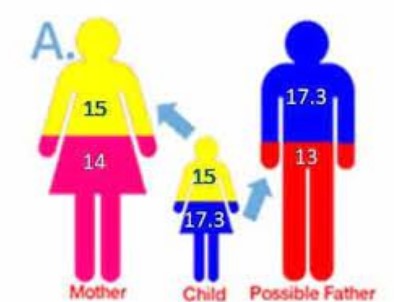DNA testing and paternity testing are two distinct tests that are used to confirm the biological relationship between an individual and another person or group of individuals. While both tests provide reliable results, there are a number of differences between them.
We’ll also discuss the advantages and disadvantages of each test, so you can decide which is right for you.
Types of dna tests

When it comes to testing for DNA, there are two main types of tests: paternity testing and DNA testing. Both tests are used to determine the presence of genetic material in a person, but they have different purposes. Paternity testing is used to determine the biological father of a child, while DNA testing can be used for a variety of purposes, such as determining ancestry, diagnosing genetic disorders, and identifying criminals.
While both tests involve the collection of DNA samples, the types of samples and the techniques used to analyze them are different. Paternity testing typically requires a sample from the child and the alleged father, while DNA testing may require additional samples from other family members.
Additionally, DNA testing involves more sophisticated techniques than paternity testing, such as polymerase chain reaction (PCR) and sequencing. Ultimately, the choice of which test to use depends on the specific needs of the individual or organization.
Benefits of dna testing
DNA testing is an invaluable tool for determining biological relationships between individuals, providing the evidence needed to answer questions like “Who’s my father?” and “Is this person my relative?
” But what’s the difference between DNA testing and paternity testing? In short, DNA testing looks at the entire genome, while paternity testing is specific to a particular gene or set of genes. DNA testing is a tool that looks at the entire genetic code of the person tested.
It compares the genetic makeup of an individual to that of another person or a database of known profiles to determine if the two are related. Paternity testing, on the other hand, is a more targeted approach.
The benefits of DNA testing are numerous. It can help answer questions about family relationships, provide evidence in legal cases, and uncover medical information specific to a person’s genetic makeup.
In addition, it can be used to identify individuals, as in the case of missing persons and forensic investigations, and can even be used to uncover the origins of certain diseases. Paternity testing, while less comprehensive than DNA testing, has its own set of advantages. It can provide definitive proof of a biological relationship, which is especially important in legal cases such as child support and custody disputes. It can also provide valuable medical information related to inherited genetic conditions. In conclusion, DNA testing and paternity testing both have their own distinct advantages. DNA testing is a comprehensive look at an individual’s entire genetic makeup, while paternity testing focuses on specific genes to determine if a man is the biological father. Both are valuable tools for uncovering family relationships, providing evidence in legal cases, and uncovering medical information.
How dna testing works

DNA testing is a powerful tool that can help answer questions of identity and family relationships. While both DNA and paternity testing can provide valuable insights, it is important to understand the differences between the two. DNA testing looks at the entire genetic makeup of an individual while paternity testing focuses only on specific markers from the father’s side.
DNA testing looks at the entire genetic makeup of an individual while paternity testing focuses only on specific markers from the father’s side. Paternity testing can help determine if a man is the biological father of a child, while DNA testing can provide a broader view of ancestry and family history. DNA testing can also be used to identify genetic disorders and inherited traits, while paternity testing does not provide this kind of information.
Ultimately, DNA testing is a more comprehensive analysis of an individual’s genetic makeup, while paternity testing can provide more specific information about a potential father-child relationship.
Accuracy of dna testing

DNA testing is one of the most reliable methods to establish biological relationships between people. However, it is important to understand the difference between DNA and paternity testing. DNA testing looks at genetic markers across an entire genome, while paternity testing looks at specific markers on the Y-chromosome.
Paternity testing can provide a definitive yes or no in cases where a biological relationship exists between people, but DNA testing is used to determine the probability of a biological relationship. In other words, DNA testing can give an estimate of how likely it is that two individuals share a biological connection, while paternity testing is designed to give a definitive answer.
Cost of dna testing
When it comes to understanding the differences between DNA and paternity testing, it can be difficult to know which type of test to choose. Both tests can help determine the identity of a biological father, but there are important distinctions to be aware of.
DNA testing typically costs more than paternity testing due to the additional complexity involved. DNA testing is also able to provide more detailed information about an individual’s health and ancestry.
On the other hand, paternity testing is typically simpler and less expensive, and is more focused on determining the identity of the biological father. Ultimately, the cost of each type of test will depend on the specifics of the situation.
Conclusion
In conclusion, there are several key differences between DNA and paternity testing. DNA testing is typically used to determine a person’s identity and is used in a wide variety of legal and medical contexts. Paternity testing is used to determine the biological father of a child and is primarily used in family law disputes.
DNA testing is more accurate and reliable than paternity testing due to the larger sample size and more sophisticated technology used. DNA testing is also more expensive than paternity testing, since it is much more involved in terms of testing and analysis.
Ultimately, the use of either DNA or paternity testing depends on the specific context and the question being asked.

